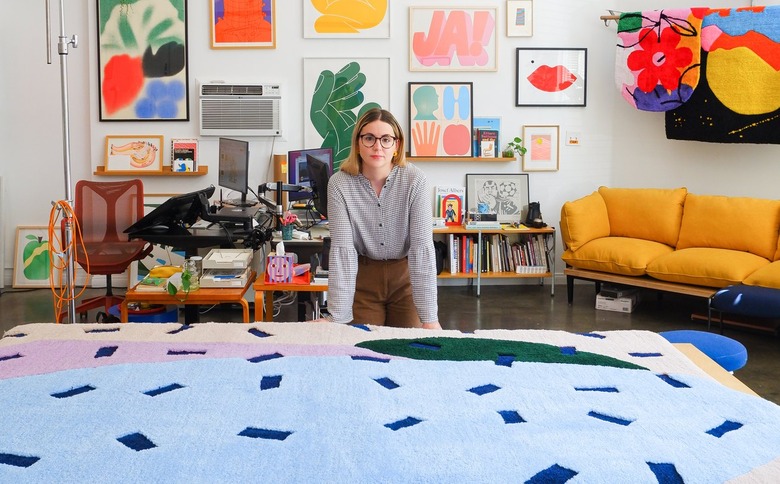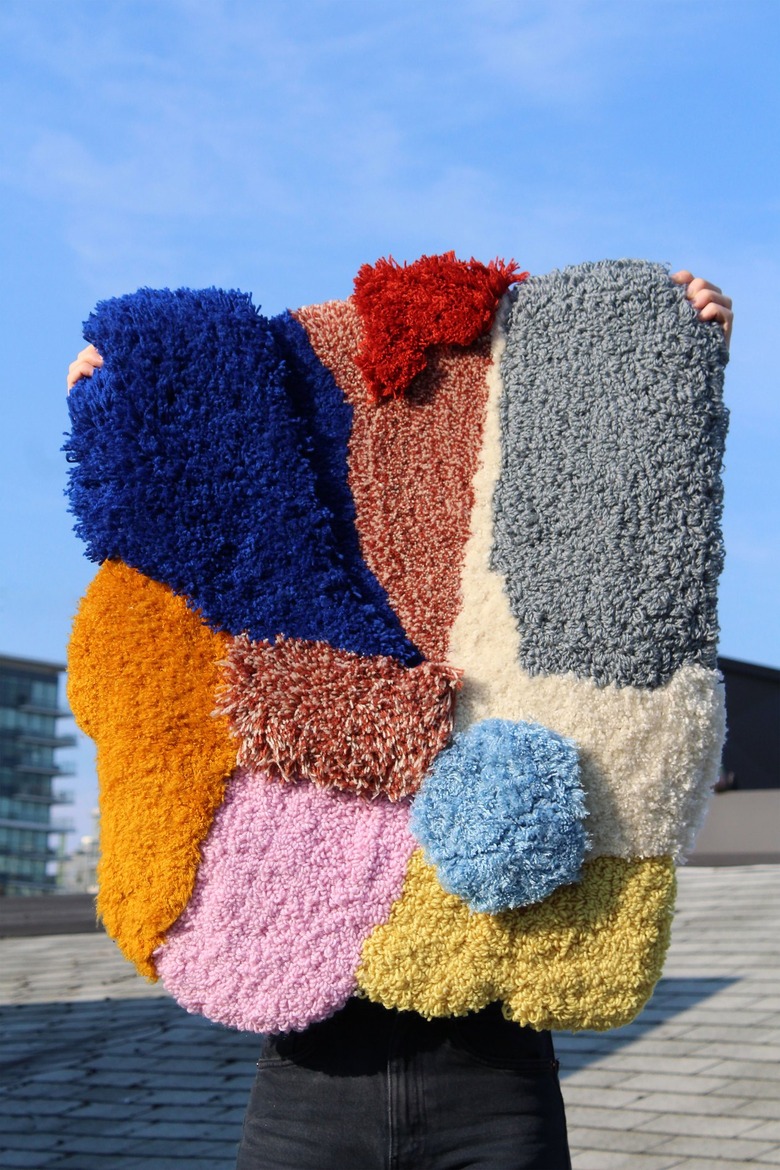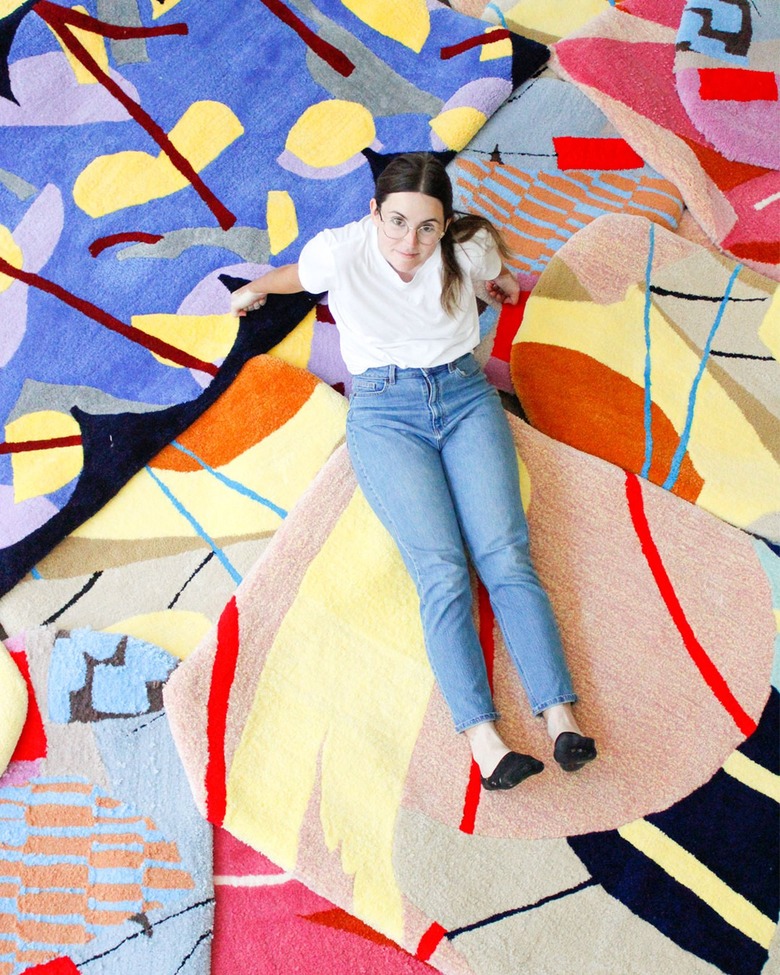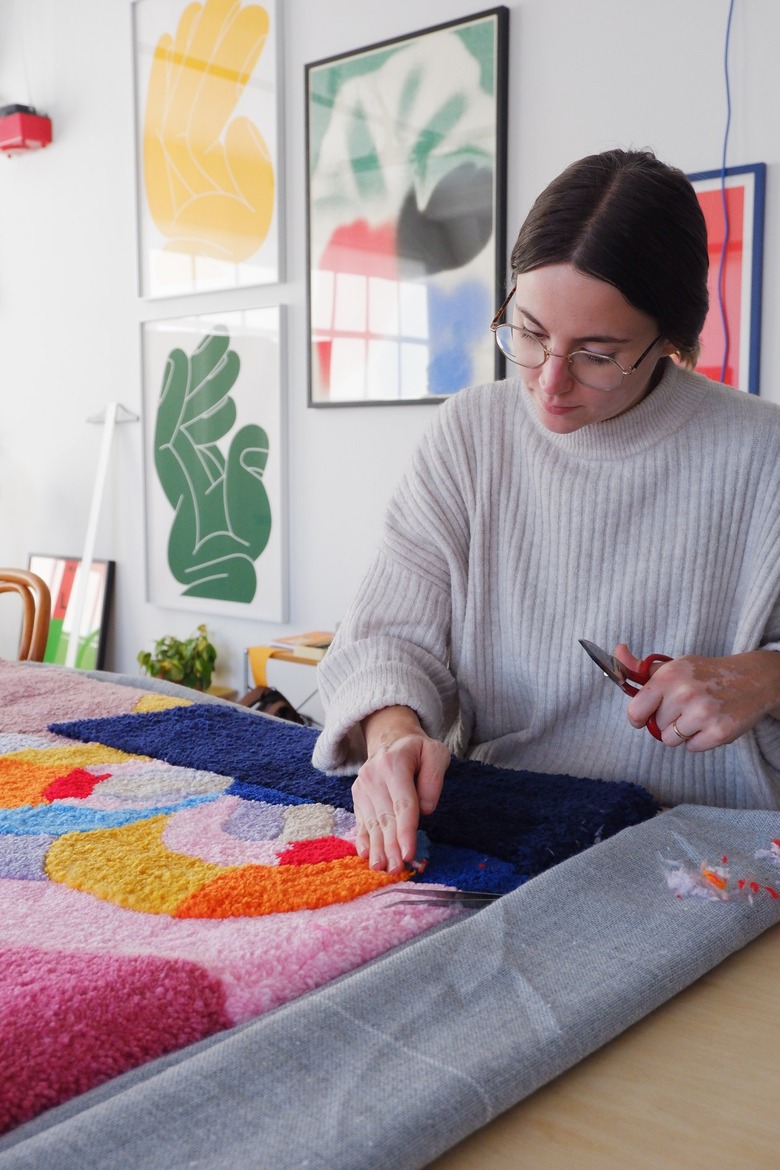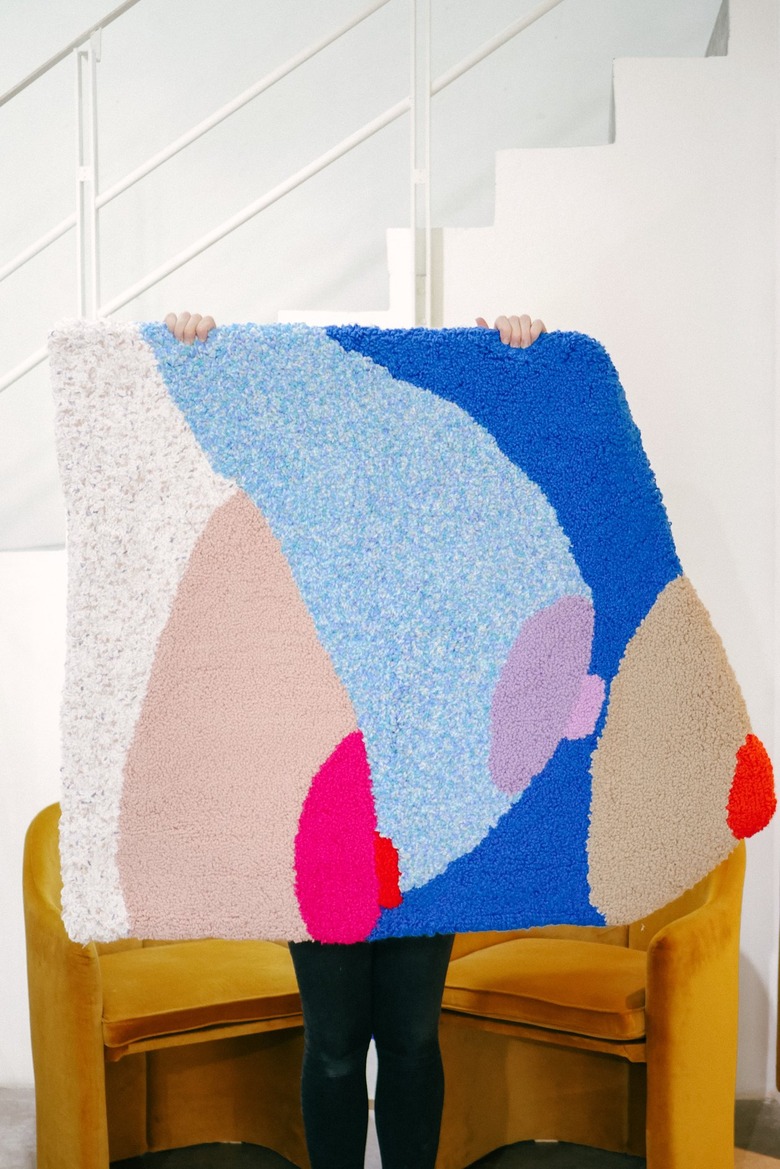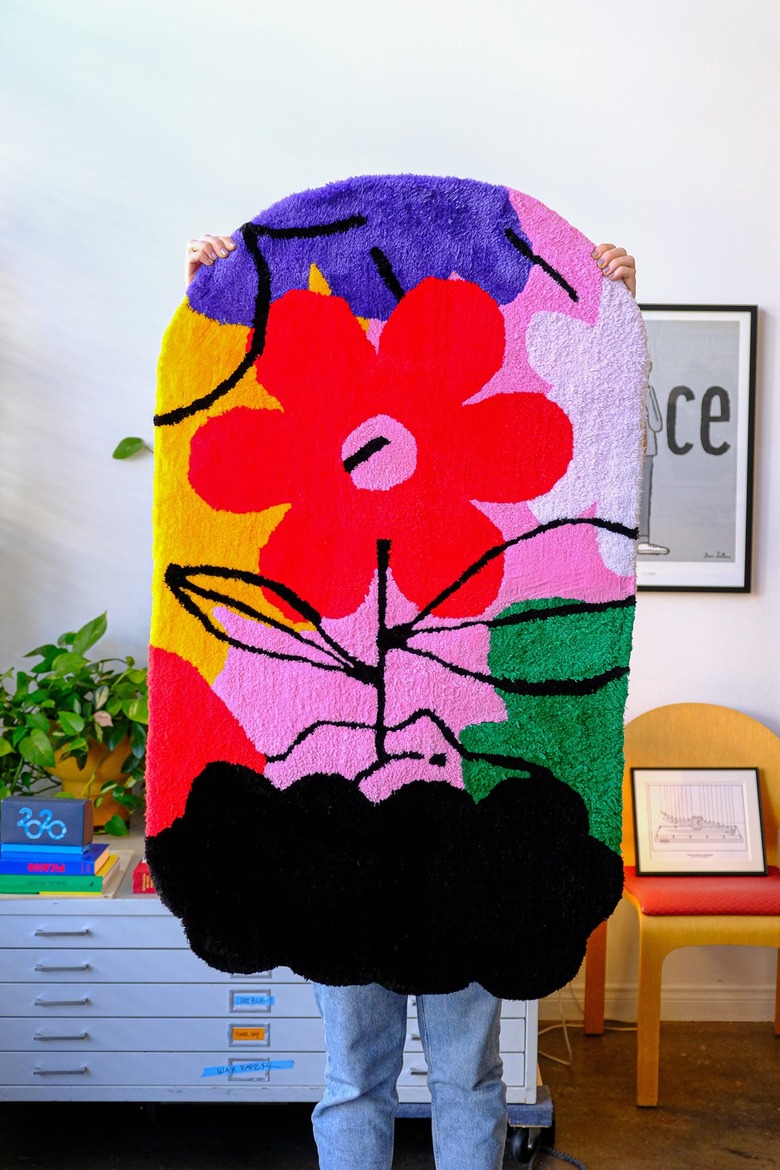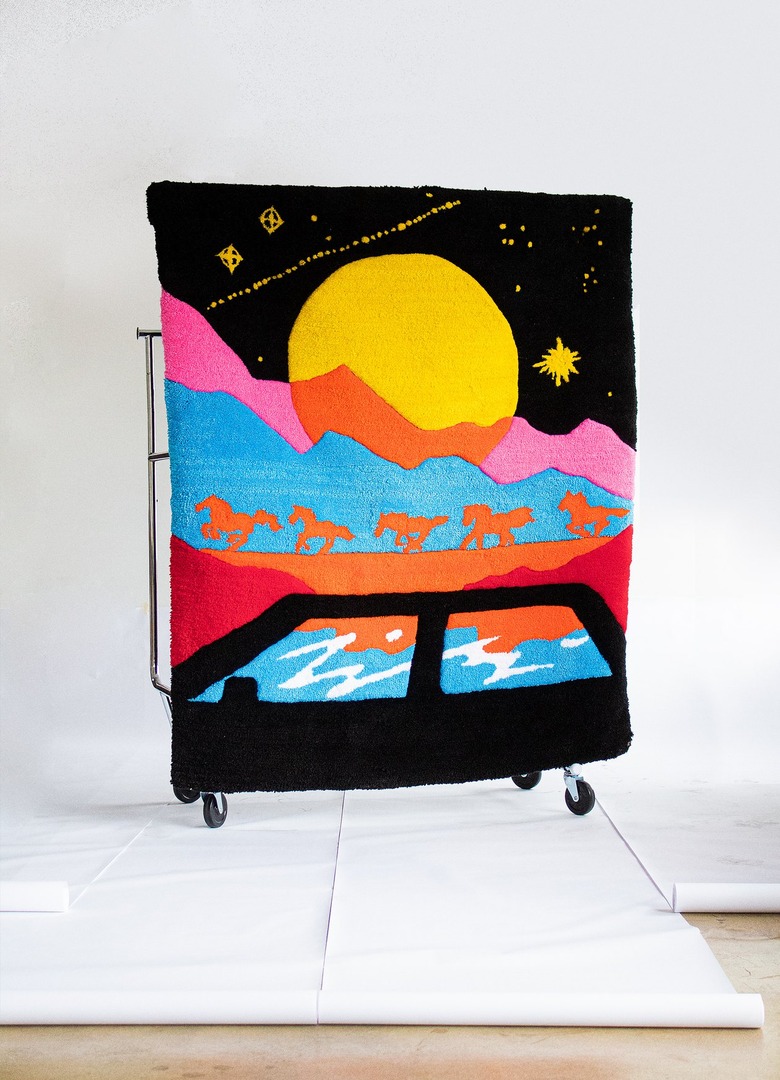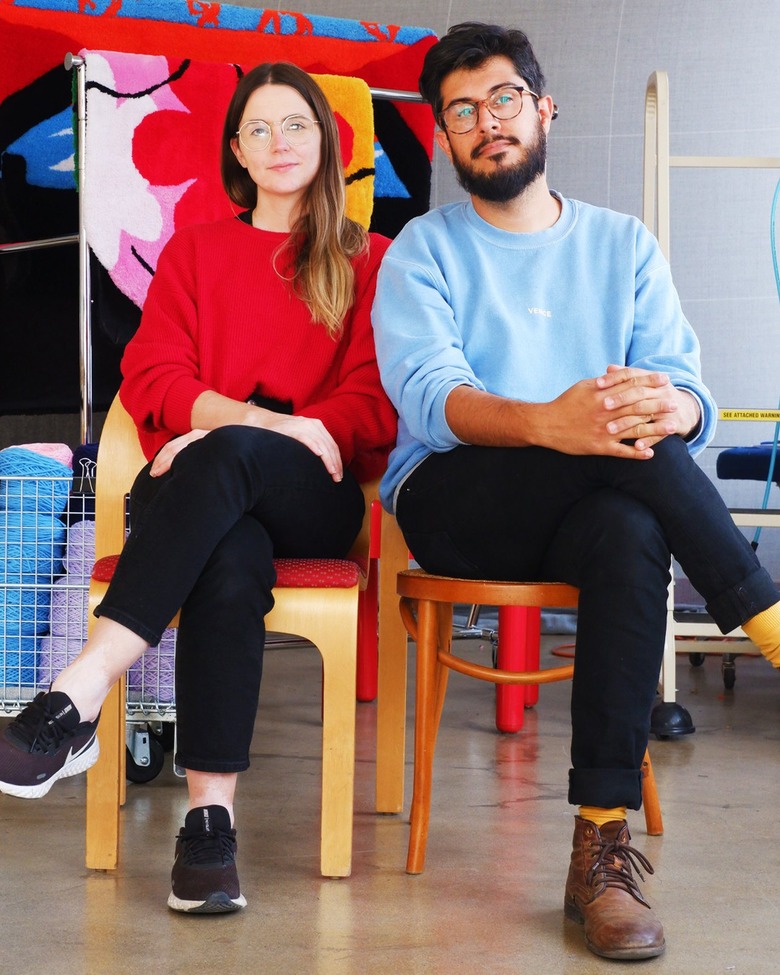Macarena Luzi's Vivid Rugs Are Anything But Square
Argentinian textile designer Macarena Luzi, a culinary school graduate, spent nearly a decade in the food industry before coming across a rug-tufting technique online that would lead to a newfound passion. It may seem an unlikely route to becoming an artisan, but a chef and rug designer do have a few things in common. Both artfully bring different ingredients together, work with an array of textures and colors, and stimulate different senses, though on wholly different canvases.
Since Luzi launched her business in 2020, her rugs have made a lasting impression on anyone who sees them. They feature vibrant color combinations, playful patterns and scenes you want to live in, and often come in unconventional shapes that will make you wonder why you ever stuck with rectangular or circular rugs in the first place. This whimsical sensibility carries over to her artwork as well: paintings and prints that are equally joyous explorations in color blocking and dancing shapes.
Luzi currently lives in Los Angeles with her husband, illustrator and animator Sebastian Curi, who is also from Argentina and whom she affectionately calls "a big deal!" They've both had high-profile collaborations. Last year, Luzi designed a line of custom rugs for Nordstrom that quickly sold out, while Curi just launched a clothing collection with Zara. So yeah, there's no shortage of creative energy flowing through their household.
We visited Luzi in the couple's Chinatown studio to talk about her budding rug business.
Hunker: Take us through your journey from working with food to textiles.
ML: I've done everything [in the food industry]. I was a waitress, I was a chef, I was a pastry chef, and then I went to the management side because I also went to business school. After that, I felt like I got a little bit lost in the routine of the business. Three years ago, I got burnt out and just thought that something was off . . . something was missing in my life, so I started making clothes for myself. I saw drafting patterns and started doing small projects for a couple of months before I actually found this rug-tufting technique. I saw a lot of videos online and did a lot of research on it. It was pretty surprising that it was speaking to me.
Hunker: Do you have a background in design?
ML: Not formally. I took some pattern-drafting lessons and I had a lot of material at home, but I didn't go to university or college for it. My mom, Claudia Oyhandy, is a fashion designer, so I grew up surrounded by her work, which is formal wear — wedding dresses.
Hunker: So not super colorful then?
ML: Not really.
Hunker: Do you consider your works as a response to your mom's monochromatic, subdued palette you were raised around?
ML: Honestly, I never thought about that. We're Latino, so we're very much in connection with colors and vibrancy, and we're super loud. I feel like we use a lot of hand gestures, too. But yeah, it could be a response.
Hunker: Did your mom teach you how to sew?
ML: Yeah, and all the people who work for her. I took lots of short-term classes back in Argentina. Then I found this tufting machine in videos, and I just wanted to maybe try [to see] if I could create an opportunity for me where I could bring in this interest that I have for textile.
Hunker: Can you explain what this specific technique is?
ML: I use an industrial-grade machine, which is basically like a drill, but instead of having a bit at the very end, it has a needle. It's like a handheld sewing machine type of situation where the needle is threaded with yarn, and then it goes forward and backward. They're creating stitch lines onto a primary fabric, which is like a canvas. And it's handheld, so you're moving it to the place that you need or want. It's like you're painting with yarn.
Hunker: Using that technique, how long would it take to do an average-size rug? And your rugs are typically one-of-a-kind and commissioned pieces, right?
ML: The process could last between one to two weeks, and I'm doing everything. Because of the process being so labor-intensive, the majority of my work is commissioned. A client reaches out to me and says, "I want a rug and I have this idea." We talk about the specifics, the needs, what they have in mind. If they like something from my portfolio already as a reference, they show me. It's the fun part.
"I have to be very close to the client [when I am creating a rug] because I have to understand their space, their needs, how it's going to work with the other furniture, or whatever they have in that space. I want to be mindful of what they already have in their space because they have to coexist and not compete. It has to be a part of their safe space." — Macarena Luzi
Then I go into the design process where it's usually between two and three rounds of feedback. I present a couple of options, a drawing or a collage, and then once they decide on one, we talk about materials.
Hunker: What was the turning point when you knew this was a viable business and something you really wanted to spend all your time doing?
ML: It's a great question because, honestly, when I started, when I found this technique, that's when I actually thought, "Okay, I'm going to try to make it a business, so let's try to make it sustainable. Let's try to make good use of my time." When I'm designing, I'm also thinking about the final product, and every single effort that I'm putting toward this endeavor is actually going to be productive towards that final goal. Every single thing that I'm testing is something that ultimately is going to be sold.
I'm still very much developing my style and language, but I'm pretty proud of it. When I started this, there weren't a lot of contemporary designs in rugs. Now I think there are more designers and people who are actually seeing that as an opportunity.
Hunker: Why did you choose to produce unconventional shapes for your rugs?
ML: I tried to separate myself from the industrialized rugs that are already out there and I found that for me, when I'm designing, it's a great way to not limit myself. So I just thought, "There are a lot of rectangles out there. Why don't I push that boundary?" It's not a revolutionary idea, but it does feel like it's a very simple thing: let's not do rectangles.
Hunker: Do you think there are other benefits to not being formally trained in the craft?
ML: I think it's a very interesting conversation, and it's something that I battle with. On one hand, you lack control or you lack experience because you haven't been through that path. But on the other hand, there's a lot of freedom or less filters. A lot of people say that they resonate with how I work with color. That's something that, every single week, I try to work on — my illustrations and my collages. So they're exercises for me on composition and color.
Hunker: You have also collaborated on rugs with international artists, such as Annu Kilpeläinen and Murugiah. How has that experience been?
ML: I think every collaboration is a dream. Every single thing that you can accomplish with the person who you admire is very mind-blowing, and that was something very important to me. I knew of Annu Kilpeläinen's work, and I sent her an email [as a fan]. I really wasn't sure that she would even reply or be interested in doing something with me, but I think I was very eager, and I just wanted to make stuff and keep being productive. I thought, especially being very new, that it would be beneficial for me and for my practice to be able to work with another person. She was very gracious, and she replied right away: "Hey, you're doing something that's really cool. I'm interested." Annu sent me a few illustrations that she saw that might translate from still image to a textile. And then it just came about.
Hunker: Has it been challenging to establish yourself in a big market like Los Angeles? How different would it be if you were operating your business out of Argentina?
ML: It would be almost impossible, I think, to be able to live off ... and do it full time [in Argentina]. I mean, L.A. has its challenges, of course. It's a bigger market. There's more money out here and more people with disposable income. I don't think that I would be able to do what I do in Argentina. Our country is going through crises and financial trouble. I think it really helped us being here. We actively made that decision. Where should we go? What's the most intelligent way to think about our business and our practice?
